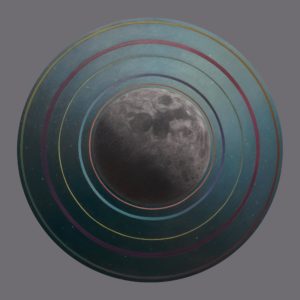“The natural environment, with its astounding beauty and complexity, not only influences art; it stands as an unparalleled masterpiece in and of itself… Could our shared environment be the very first example of immersive art?”
![]()

POV provides AMA friends and fans the opportunity to share their knowledge and points of view about art.
Earth as Immersive Art was written by guest contributor Nathan Boschult, spokesman for Texas Real Estate Source. He is a graduate of the University of Texas at Austin. Nathan, whose father was a high school art teacher, enjoys contributing to POV because it “allows me to indulge an interest in art history that I’ve had since childhood.”
![]()
Nature has been artists’ preeminent muse for longer than we’re able to look back in history, long before it began weaving its intricate tales through strokes of paint, chisels on stone, and verses of poetry. The natural environment, with its astounding beauty and complexity, not only influences art; it stands as an unparalleled masterpiece in and of itself. Far more than merely inspiring art, our shared environment birthed its very existence.
As the sun casts shifting hues on its sky-bound canvas and the percussion of waves drums a silent shore, one can’t help but wonder: is nature itself not the very essence of artistic expression? Could our shared environment be the very first example of immersive art? If one answers in the affirmative, how, then, can viewing the environment as an artistic masterpiece lead to a greater appreciation for and conservation of the planet? By delving into the profound relationship between the environment and art, humanity can gain profound insights into our interactions with the world around us, perhaps for the better of both humanity and the planet.

Shared History & Intertwined Elements
Cave paintings are some of the earliest examples of visual art, and while our ancient ancestors likely didn’t gather and conceptualize artistic expression, their instincts nonetheless led them to create it. Their subject matter was their environment, and without realizing it, they discovered the elements of art in the world around them.
The elements of art—color, texture, space, value, line, shape, and form—are all derived from nature. From the push and pull of nature’s expansiveness and confinement to the vast spectrum of textures held by a single tree, our shared environment created, enabled, and inspired artistic expression.
![]()
The Dynamic Canvas
Being in a state of perpetual motion, it’s easy to draw parallels between the environment and kinetic art. Ever-evolving, shifting, and transforming, nature’s movement is chaotic and powerful. Humans, a significant part of the environment, can easily lose sight of the fact that they are part of a symbiotic relationship. Whether it be technological advances, man-made marvels like skyscrapers or aircraft carriers, or highly developed societies, it’s extremely easy to forget the fact that the earth enables everything.
Thousands of years after the first cave paintings were created, artistic movements like the land art movement—where artists use natural materials and terrain to create large-scale outdoor artworks—sprung up, echoing themes and inspirations similar to those of the ancient hunters and gatherers. Environmental art came into the spotlight during the 20th century and has been steadily increasing in prevalence, and today it captivates people as much as any other artistic subject does. Now, immersive art with the aim of environmental awareness—like the One Point Five Degrees exhibition at the Arlington Museum of Art in 2024—is being promoted by some of the most well-respected art institutions in the world.

The Future of Art, Environment, and Us
As one enormous, near-incomprehensible work of immersive art, our shared environment should occupy a significant portion of the art world’s spotlight. Given the state of the globe—with environmental degradation, climate change, and loss of biodiversity eating away at the dynamic canvas—a more widespread recognition of and appreciation for the world as an expression of immersive art is becoming vital to the future of everything. Much like homebuilders are promoting sustainability with their methods, materials, and approaches, artists are commenting on and using the environment for the better of the world.
Environmental activism through artwork is of paramount importance, and it’s being reflected in the art world. Artists have power and influence over the collective consciousness, and since the environment enables and inspires everything they do, using their works to effect change and awareness of environmental issues has a tremendous impact.
The Dynamic Global Canvas
The world is a dynamic, ever-evolving canvas, with every sunrise bringing new colors and every season a fresh palette. Art and the environment are inextricably linked, each echoing the beauty and profundity of the other. Just as art compels us to feel, think, and reflect, nature does the same, challenging us to recognize its inherent artistry. As we journey through life, let us remember to view our environment with the same awe and reverence as we would a timeless masterpiece. In cherishing and preserving it, we not only save invaluable inspiration for generations of artists to come but also safeguard the universe’s most exquisite piece of art.
![]()
One Point Five Degrees
Coming to the New AMA March 30 – June 23, 2024
Brought together for the first time by the AMA, American artist Adam Fung and Canadian artist Sabrina Ratté contemplate the immense power and crescive fragility of our natural world through immersive digital art. Click here to learn about the exhibition and the artists.
![]()
